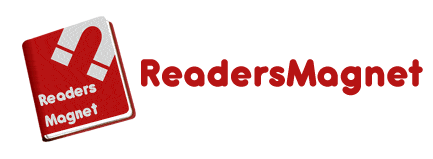Self-publishing is publishing your work without the aid of any established publishing company. Unlike traditional publishing, self-publishing allows authors to have creative and marketing control of their works. Self-publishing is also accessible and affordable, especially for first-time authors. Over the years, the self-publishing industry has evolved with the arrival of print-on-demand technology (POD), eBook format and online publishing platforms. Below are self-publishing tips on how to publish a book:
DIY Publishing
‘Do it yourself’ is pretty much self-explanatory. DIY publishing means that the author shoulders all the publication costs and does all the marketing, distribution and everything that involves the promotion of his/her brand. By choosing to publish your book in DIY style, you have absolute control over your book, its rights as well as its profits. All you need is to look for people who can edit, design and print your book. This self-publishing tip is the closest thing to genuine self-publishing.
POD Publishing
The technology that allowed presses to print one book at a time forever changed the publishing industry. With POD you can choose to print how many copies you want. You can even print a single copy or a few hundred depending on the demand. This way you don’t run the risk of overprinting. Print-on-demand is cost effective and convenient. With less hassle, you can now focus on marketing your book and make sure demands keep coming.
Subsidy Publishing
Subsidy publishing means an author partners with a publisher for the investment of his/her book with both parties agreeing to share the profit from the sale. While it is not regarded as the best way to self-publish a book, subsidy publishing is becoming more popular among aspiring authors who don’t have the knowledge and resources to publish their books. The only disadvantage is that once the books are complete, they belong to the publishers until the books are sold.
Partnership Publishing
This publishing model is not so popular in the United States but many believe publishers will begin to embrace this arrangement between publishers and authors. Partnership publishing is quite similar with subsidy publishing but with one difference. Unlike subsidy publishing, partnership publishing involves financially backing an author for one or two more titles. Though most contracts do not stipulate advance payments, its royalties are certainly higher than those offered by subsidy or traditional publishers. Partnership publishing allows aspiring authors more opportunities to grow and be recognized.
Self-Publishing Company/Service
Publishing book through the help of a self-publishing company is probably the best option for any aspiring author. This model offers the standard services of traditional publishing but without its hassles and most of its restrictive features. Self-publishing companies offer various publishing and marketing packages that authors can choose from, depending on their needs and financial considerations. Self-publishing companies grant authors 100% net sales and of course, the full rights to their books.
Hybrid Publishing
Hybrid publishers describe themselves as a cross between traditional and self-publishing. However, some critics believe that “hybrid publisher” is just a fancy term for a self-publishing company. While definitions may vary, a hybrid publisher can be classified in the following categories: Editorially curated, Crowd funding-driven, Assisted publishing, and Traditional publishers with a self-publishing arm. Editorially curated publishers are very selective and have a set standard in accepting authors which usually result in successful marketing and distribution. Crowd funding-driven publishers require their authors to raise funds from their readership before they enter into a partnership. The first two categories are principles close to traditional publishing while the last two categories are common in most self-publishing companies.
The (items change to list) above are the general categories for self-publishing. However, it is interesting to note other options for self-publish authors.
Serial publication is publishing your work in small, sequential installments. The serial publication has a rich history in print publication. Authors like Alexander Dumas, James Joyce, and Arthur Conan Doyle used to pitch in their works in local magazines and newspapers. Today, some authors choose to publish their works online in serial format to attract possible publishers and distributors. Andrew Weir’s The Martian is perhaps the best example of an online serialized novel that eventually became a best-seller.
There are agents who offer to digitally publish works of their existing and new clients in exchange for a certain percentage cut in sales. Other agents prefer fee-based services or royalty-based while there are those who refer to hybrid models. This practice can be problematic since agents are supposed to just represent their clients and present only the best package deals for them. If you choose to enter into this kind of publishing partnership, just make sure to check the agreements and make sure that your interest is genuinely protected.
There are several ways to self-publish and it is important to know what option is best for you and your book. Self-publishing is a convenient alternative to traditional publishing but only if you are with the right publishing partner.
ReadersMagnet is a self-publishing house that believes in sharing your stories with the world. Contact us at 1-800-805-0762 | 619-354-2643 or email us at info@beta.readersmagnet.com and we’ll make sure your journey to self-publishing is a success.


I’ve done the self-publishing route for my last three books, never looked back since then. Save me a lot of money. Best decision I’ve ever made.
Wow, thanks for this! I’ve been faltering for a while now, caught between choosing to go self-publish or hire a publisher. This would undoubtedly make up my mind now!